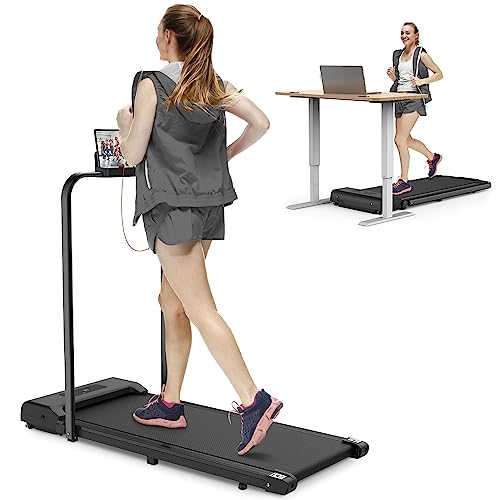What's The Job Market For Tread Mill Professionals?
Treadmills: A Comprehensive Guide to Understanding Their Functionality, Benefits, and Appropriate Selection
Introduction
Treadmills have actually become a staple in modern-day fitness routines, both in homes and gyms worldwide. They provide a convenient and efficient way to maintain cardiovascular health, increase endurance, and help in weight management. This post checks out the different types of treadmills, their benefits, functions to consider when buying, and some FAQs to direct users in making notified decisions.
Types of Treadmills
When it comes to selecting a treadmill, it is crucial to comprehend the various types readily available in the market. Here are the primary categories:

1. Manual Treadmills
- System: These treadmills have an easy style and count on the user's efforts to move the belt.
- Pros: More cost effective, quieter operation, no electrical power needed.
- Cons: Limited functions, might not supply the same range of workout intensity.
2. Motorized Treadmills
- Mechanism: Powered by a motor that drives the belt, enabling users to stroll or perform at a set speed.
- Pros: Greater variety of speeds and slopes, geared up with numerous features such as heart rate screens and workout programs.
- Cons: More costly and may need more maintenance.
3. Folding Treadmills
- Mechanism: Designed for those with limited area, these treadmills can be folded for easy storage.
- Pros: Space-saving, often motorized, versatile features.
- Cons: May be less long lasting than non-folding models.
4. Commercial Treadmills
- Mechanism: High-quality machines designed for usage in health clubs and fitness centers.
- Pros: Built to hold up against heavy use, advanced features, often consist of guarantees.
- Cons: Pricey and not ideal for home use due to size.
5. Curved Treadmills
- System: A distinct style that allows users to propel the belt using their own energy.
- Pros: Offers a more natural running experience, promotes much better running form.
- Cons: More costly and can be noisier.
| Treadmill Type | Pros | Cons |
|---|
| Manual | Inexpensive, no electrical power required | Minimal features |
| Motorized | Range of speeds, advanced functions | Upkeep required |
| Folding | Space-saving, often motorized | May do not have durability |
| Industrial | Developed to last, professional-grade functions | Costly |
| Curved | Natural running experience, promotes excellent type | Greater price |
Advantages of Using Treadmills
Treadmills offer various benefits that can contribute to one's overall fitness goals. A few of these benefits include:
- Convenient Workouts: Treadmills allow users to work out inside your home no matter weather conditions.
- Cardiovascular Health: Regular usage can improve heart health by increasing endurance and promoting healthy flow.
- Weight Management: Effective for burning calories, which aids in weight-loss and management.
- Adjustable Workouts: Users can control speed, incline, and period to produce individualized exercise experiences.
- Security: Treadmills offer a predictable surface area, lowering the danger of falls compared to outside running.
- Multifunctional: Many treadmills included features like heart rate displays, exercise programs, and even entertainment systems.
Picking the Right Treadmill
When choosing a treadmill, prospective buyers must think about numerous essential elements:
Features to Consider:
- Motor Power: Typically measured in horsepower (HP), a motor strength of at least 2.5 HP is advised for serious runners.
- Belt Size: A longer and broader belt accommodates various stride lengths, supplying convenience during exercises.
- Incline Settings: Adjustable slope functions mimic outside hill running and can increase workout intensity.
- Weight Capacity: Ensure the treadmill can support the user's weight for safety and longevity.
- Console Features: Look for user-friendly dashboards, workout programs, and Bluetooth compatibility for streaming music or other functions.
Spending plan Considerations
- Under ₤ 500: Entry-level manual treadmills appropriate for casual walkers.
- ₤ 500 - ₤ 1,500: Mid-range motorized treadmills that provide more functions and better toughness.
- ₤ 1,500 - ₤ 3,000: High-end models with sophisticated innovation, bigger motors, and longer guarantees.
- Over ₤ 3,000: Commercial-grade treadmills ideal for frequent use in health clubs or training facilities.
Frequently Asked Questions (FAQs)
1. How often should I utilize a treadmill?
It is recommended to use a treadmill a minimum of 3 to 5 times a week, integrating various strength levels for best results.
2. Can I slim down by utilizing a treadmill?
Yes, consistent usage of a treadmill can contribute to weight-loss, especially when integrated with a balanced diet plan and strength training.
3. What is the best speed to walk on a treadmill for newbies?
A speed of 3 to 4 miles per hour is an ideal range for newbies. It's necessary to start sluggish and slowly increase pace as convenience and endurance enhance.
4. Do I need to utilize a treadmill if I currently run outdoors?
Using a treadmill can supply fringe benefits, such as controlled environments and differed exercises (incline, periods) that are not constantly possible outdoors.
5. How do I keep my treadmill?
Regular maintenance includes lubing the belt, cleaning up the deck and console, and checking the motor for optimum performance.
Treadmills are necessary tools for those wanting to enhance their physical fitness levels in a controlled and hassle-free way. With different types offered, understanding their features and benefits is important for making an informed purchase. By thinking about personal workout requirements, space availability, and budget constraints, individuals can discover the most suitable electric treadmill for Sale that fits their lifestyle. Integrating treadmill workouts into a well balanced fitness routine can cause improved health results and a pleasurable workout experience.

